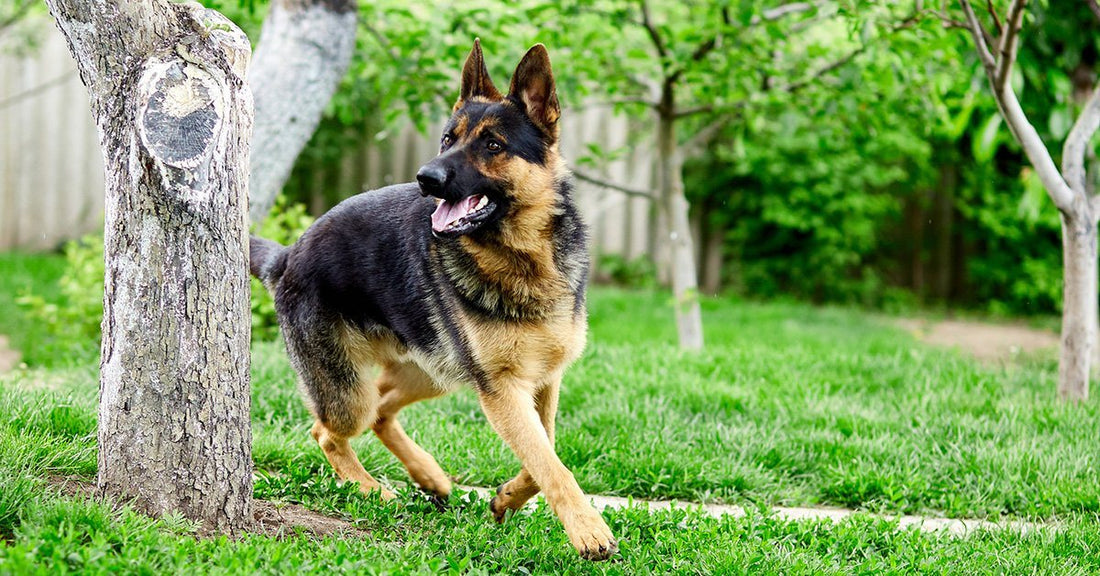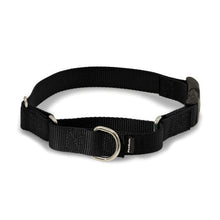What To Do If Your Dog Runs Out The Front Door

Having your dog run away is a nightmare and it can happen in a flash. They can shoot out of the front door after a cat, sneak out a back gate while you’re trying to mow the lawn, and be on their way down the street before you have a chance to react.
Once on the run, dogs are usually excited and stimulated by all they can see and do. While you’re scared as heck, your dog is having a really great time. Since this behavior is self rewarding, they get better at escaping each time they succeed. However, if they are chasing an animal, car, or a person, the situation can quickly get dangerous.
Dogs love to explore, adventures, and the wind in their fur. Running out the door gives them all this. Dogs that are clever, love a good challenge, and crave mental and physical stimulation most often enjoy a good old fashioned door dash.
Training the recall, sit, and stay can help prevent escapist behavior from happening but if it does occur, what should you do? The success of your reaction will depend on the personality of your dog but here are some tips that may help:
Don’t scream, yell, or get angry
No matter how scared or frustrated you are, it is important to stay calm. Yelling at your dog in an angry voice probably won’t be helpful. Most dogs bolt out of the door to play a fun game and want to avoid getting in trouble. Yelling at or punishing a dog can have the reverse affect and actually cause them to move further and further away. If they’ve ran away in the past and been punished, they will remember and it won’t help you catch them if it happens again.
Don’t chase - it probably won’t work
Unless you can outrun your dog, chasing probably won’t work, especially if you own a dog that loves to be chased and makes a game of it. You can however, tap into this love of the chase behavior by inviting your dog to chase you rather than the other way around.
Try calling your dog in an excited, playful voice and step back as if to play. Slap your hands on your thighs, ask them to get a toy, or use whatever signals you use on your dog during playtime. If you can get your dog’s attention and they head toward you, try to keep the game up until you can get hold of them. When you do, remember not to punish them. Contrary to how annoyed you may be feeling, reward them for coming back.
If you do chase…
If you feel like you need to chase your dog, keep the tone playful. Rather than running straight at them if they are the type to run away, try approaching their side or zig zagging toward them. Don’t yell. Try calling your dog and moving away to see if they will follow you.
Use the car if your dog loves to travel
If your dog loves to ride in the car, get in your car, open the door, roll down the window, and see if your dog will run to the car for a ride. Use whatever command or signal that your dog is used to when you go places together. Stay excited and upbeat, this is going to be fun! If you have to drive down the block and stop the car and call your dog. Use caution not to chase your dog with the car or vice versa.
Try other commands they obey
Interrupting the chase by giving another familiar command can help you get their attention. If your dog can hear you and is not responding to the recall command, assuming you have one, try sit or lie down. Praise, praise, praise, if they respond. Then move toward your dog while praising them and grab their collar or leash.
Sit, kneel or lie down
If your dog is the curious sort, you may be able to grab your dog’s interest by sitting, kneeling or lying on the ground. Get on your knees and call your dog in a playful way and see if they respond. If they do, sit or lie down and try calling them.
Use treats and rewards
If you can use treats, food, or other rewards to lure the dog with, use them. For example, if your dog loves to play in the hose turn the hose on.
How to prevent door dashing
Training
Training your dog is the most important thing you can do to prevent them from bolting out the door. Teaching your dog to sit before exiting, to come when called, and other obedience commands will help their overall behavior and reprogram their bad habits.
To stop the bad habit, start by offering your dog an alternative behavior. Manage their behavior by having them sit at all doors in the house and give plenty of praise and treats. Teach them that inside doors don’t open unless their butt is on the floor.
Once they master the inside doors, move onto the outside doors to the back and front yard. Use a leash to prevent door dashing and don’t open the door unless they are sitting calmly and have permission to calmly exit. Once they master a leash, practice on a long line or retractable leash. Teaching the come/recall during this time is also a great idea.
Practice sitting before going out everywhere you go-on outings, car rides, walks, store, the dog park. Make training fun and teach your dog that by sitting at the door, good things happen.
Exercise and playtime
Dogs need regular exercise and mental stimulation. Just like people, they get bored with the same old routine. To help prevent bolting, take your dog on more walks, increase playtime, give them more age/breed appropriate exercise, spend more time training, and spend more quality time together. Your best friend will appreciate it.
Prevention
Preventing escapes is important for the dog’s safety and to reinforce training. Until the dog is well trained, use baby gates, alternative entrances, double doors (if you have them), crates, etc. Do whatever you need to do to prevent your dog from ever running out the door without permission again.
We hope these tips are helpful. Go ahead and share them with your family and friends.
























